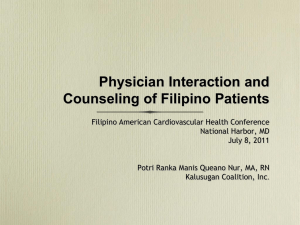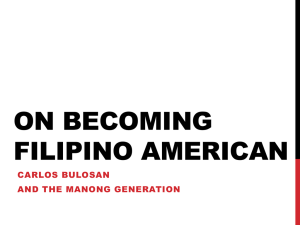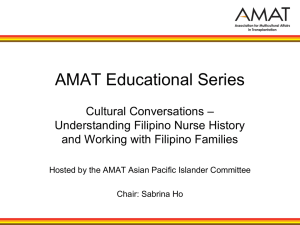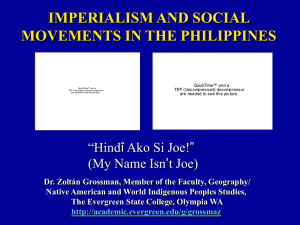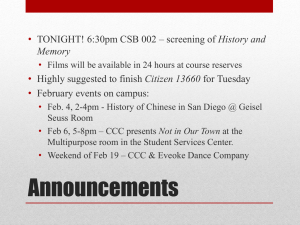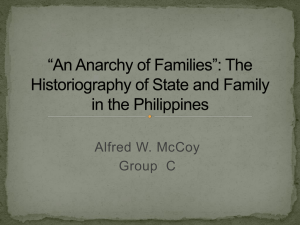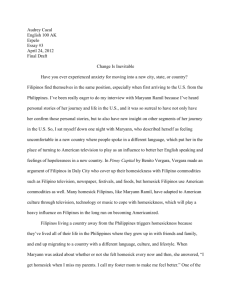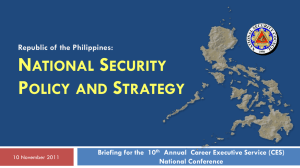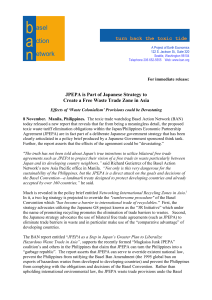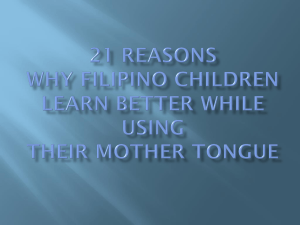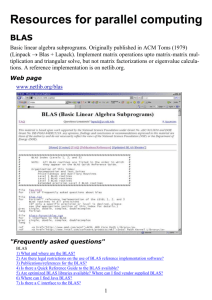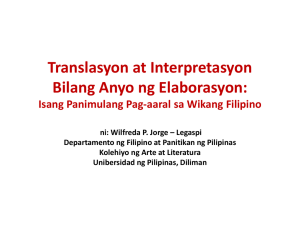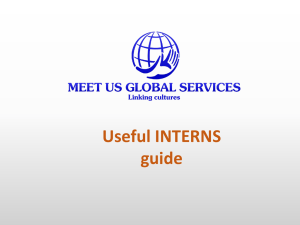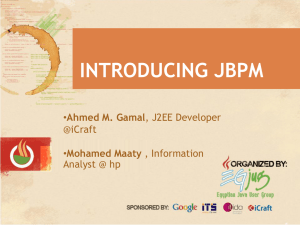Slajd 1
advertisement
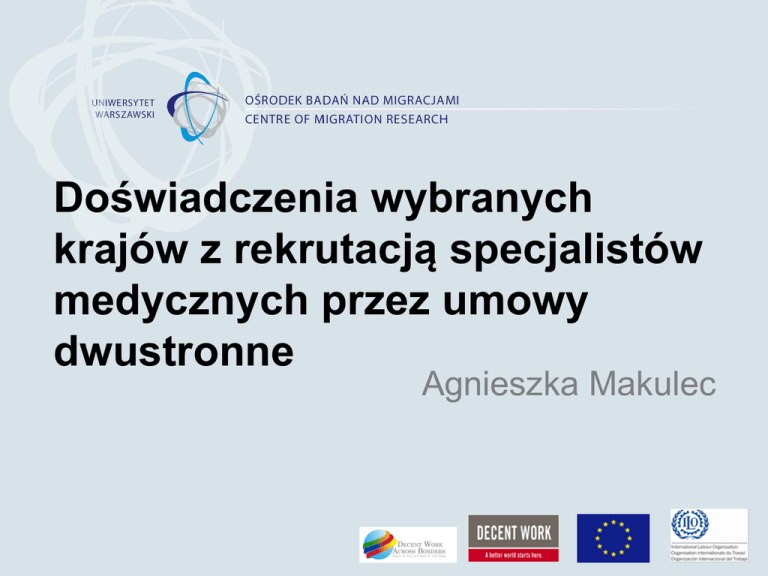
Doświadczenia wybranych krajów z rekrutacją specjalistów medycznych przez umowy dwustronne Agnieszka Makulec International recruitment of HPs and brain drain • 4,3 mln global shortages of HPs (WHO, 2006) • Consequences of HPs migration for sending countries • Right to health vs. freedom of movement • BLAs: remedium for brain drain and rights’ violation? “Members should in appropriate cases supplement the Migration for Employment Convention (Revised), 1949, and the preceding Paragraphs of the present Recommendation by bilateral agreements, which should specify the methods of applying the principles set forth in the Convention and in the Recommendation. In concluding such agreements, Members should take into account the provisions of the Model Agreement annexed to the present Recommendation in framing appropriate clauses for the organisation of migration for employment and the regulation of the conditions of transfer and employment of migrants (…)” ILO, Recommendation 86 Migration for Employment, 1949 “Developing countries will not be targeted for recruitment, unless there is an explicit government-to-government agreement with the UK to support recruitment activities.” UK DH, Code of Practice for the international recruitment of healthcare professionals, 2004 “MS should use this Code as a guide when entering into bilateral, and/or regional and/or multilateral arrangements, to promote international cooperation and coordination on international recruitment of health personnel. Such arrangements should take into account the needs of developing countries and countries with economies in transition through the adoption of appropriate measures.” WHO Global Code of Practice on the International Recruitment of Health Personnel, 2010 Philippines as HPs sending country • largest ‘exporter’ of health and social care workers globally (total deployed nurses in 2012 – 15 thous.) • about 460 nursing colleges offer BSN, approx. 20,000 graduates annually • over 200 thous. Filipino nurses are unemployed or underemployed; only 62 thous. of the 273,373 nurses who were trained in 2009 are currently working in PH • Republic Act No. 10022, ‘State shall deploy overseas Filipino workers only in countries where the rights of Filipino workers are protected’ • 21 BLAs till now, only 5 for health professionals TOP 10 destinations for Filipino nurses in 2011 KSA, Singapore, UAE, Kuwait, Oman, Qatar, Taiwan, Jordan, Sudan, UK BLAs with Norway 2001, Spain 2006 and Bahrain 2007 – lack of implementation Agreement Between POEA and the Directorate of Labour Norway on Transnational Co-Operation for Recruiting Professionals from the Health Sector to Positions in Norway (June 26, 2001) Memorandum of Understanding on Cooperation for the Management of the Migration Flows Between the Ministry of Labor and Social Affairs of the Kingdom of Spain and the Ministry of Labor and Employment of the Republic of the Philippines (June 29, 2006) Memorandum of Agreement Between the Republic of the Philippines and the Kingdom of Bahrain on Health Services Cooperation (April 24, 2007) BLAs with United Kingdom 2002/2003 Memorandum of Understanding between the Government of the Philippines and the Government of the Kingdom of Great Britain and Northern Ireland on Healthcare Cooperation (July 30, 2003) Recruitment Agreement Between the Government of the Republic of the Philippines and the Government of the United Kingdom of Great Britain and Northern Ireland (January 8, 2002) Context and content of BLA • NHS employers only NHS code of practice, 20012004 • Too late? • Policy change as the reason for no renewal BLAs with United Kingdom 2002/2003 6000 2001Recruitment peak (5,388) 5000 4000 2002 BLA signed 3000 2000 2003 MOU signed 1000 2004 MOU ratified 1999 UK Market Opened 2006 BLA terminated/MOU not implemented 0 1998 1999 2000 2001 2002 2003 2004 Total deployed nurses: new hires 2005 2006 2007 2008 Nurses deployed under BLA 2009 2010 2011 JPEPA, 2009 Memorandum of Understanding Between the Philippine Overseas Employment Administration and the Japan International Cooperation of Welfare Services on the Deployment and Acceptance of Filipino Candidates (JPEPA) (January 12, 2009) Memorandum of Understanding Between the Philippine Overseas Employment Administration and The Japan International Corporation of Welfare Services on the Deployment and Acceptance of Filipino Candidates for “Kangoshi”, Filipino Candidates for “Kaigofukushishi”, Filipino “Kangoshi”, and Filipino “Kaigofukushishi” (January 12, 2009) • • • • Nurses as trade goods Market opener role Hard requirements and JPEPA criticism Future prospects Japan 100 90 80 70 60 50 93 40 70 30 46 20 26 10 0 0 2001 0 2002 0 2003 0 2004 0 2005 0 2006 0 2007 0 2008 2009 2010 2011 2012 Lessons learnt • • • • • • No effectiveness without implementation No implementation with option-out Asymmetry of powers by negotiations Better late than never? One approach suits all? 19 March 2013 – agreement with Germany Acknowledgements • ILO ‘Decent Work Across Borders: A Project for Migrant Health Professionals and Skilled Workers’ • Feb 2011-Jan 2014, Philippines, India, Vietnam • ‘Assessment of Philippines’ BLAs on Healthcare Professional Migration’ – 5 BLAs covered, IDIs with 32 respondents in sending and receiving countries Thank you makulec.agnieszka@gmail.com
